Undecided between a Western dream and a nostalgic soviet past, after two revolutions Kyrgyzstan hangs still in search for its identity with many doubts on where to look for it.
The independence the State obtained from the ex USSR in 1991 brought a massive wave of unemployment that continues to devastate the country. Thousands of factories that used to provide products to an immense area of the soviet giant are now abandoned; many cities are almost ghost towns since people have been migrating to the capital in the utopian search for a job.
Corruption interlaces with many bureaucratic and legal aspects. The police in the first place are accused of taking prostitutes into custody demanding ransom, sometimes raping them in the process, and of selling drugs confiscated from the major trafficking route that crosses the country from Afghanistan to Russia.
Since the independence, Islam presented itself as a way to consolidate a unified identity while serving as a moral option to the issues of the secular society in a country in which 86% of the population is Muslim. The new generations are getting closer to tradition, especially in the South where more radical ideas are slowly spreading throughout the population, seeking to give Islam more influence over the country’s politics.
This visual research intends to question the future of a highly important strategic and geopolitical area that western media tends to ignore. The international dynamics of the upcoming years are being shaped hidden within the mountains of Central Asia, balancing unstably between a fragile democratic future and the potential Islamization of society.

A boy hangs on to a structure in Ala-Too square, the center of Bishkek.

Lenin monument in the city of Karakol, in the Issik Kol region. Despite the independence from the ex Soviet Union obtained in 1991, the Kyrgyz people are constantly reminded of the prosperous past.

Flour factory in the city of Balichky, on the Issik Kol lake. In the years following independence the export market of the country has lessened, with a consequential decrease of production. Nowadays the factory is only partially operative, leaving thousands of people unemployed. The city of Balichky used to be one of the most prosperous areas with a great number of factories that would provide products such as fish and meat for the whole Soviet Union.

Abandoned boats on the shore of the Issik Kol Lake, near the city of Balichky. While before the independence the location used to provide fish for different areas of the Soviet Union, nowadays all activities stopped, leaving thousands of workers unemployed and almost turning the city into a ghost town

Adyl, a man from the village of Kadj Sai, walking between the ruins of an abandoned uranium factory. Many abandoned uranium mines and factories are scattered throughout the country; radiations are transported by water into the soil and reabsorbed by plants and animals, all the way to men. Together with the biological harm, it is important to consider the psychological issue that makes the locals blame radiations for causing every illness, which is therefore perceived as an irreparable issue.
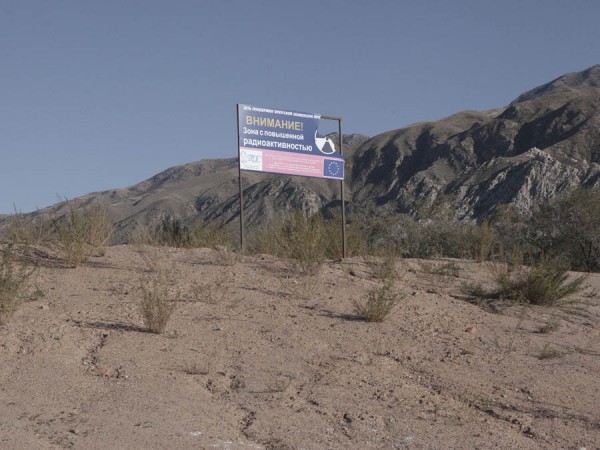
A sign posted by the European Union on an abandoned uranium mina states the presence of a higher level of radiation in the area.

Rests of an abandoned uranium mine near the lake Issik-kol.

Rustam build a sport center in the small village of Kadj Sai with the community's money: 'there are things that we can take care of on our own, but for others like the radiation we need external help if we want to solve the problem'.

A ping-pong table inside the sport center of the village of Kadj Sai.

Water system near the village of Kadj Sai. The pipes run on the abandoned uranium mines and factory.

Lenin monument in the city of Kadj Sai, on the Issik Kol lake. Despite the independence from the ex Soviet Union obtained in 1991, the Kyrgyz people are constantly reminded of the prosperous past.

Sign for the Kumtor gold mine, in which a Canadian company (main investor in the country) runs the extraction. Protest and gatherings for the nationalization of the mine have taken place at the government building in Bishkek. After the government denied the nationalization of the mine some protesters climbed the fence of the 'White House' and threw rocks before being arrested

Police gathers in Ala Too square to prevent riots by the population against the decision by the government not to nationalize the Kumtor gold mine, currently run by a Canadian company which is the main investor in the country.

Ibanova, a sex worker in Bishkek who accuses the police of having kidnapped and raped her, and eventually let her go in exchange for money. Her 14-year-old daughter ran away from home after getting to know about her mother's job, but ended up coming back to take care of her younger brother.
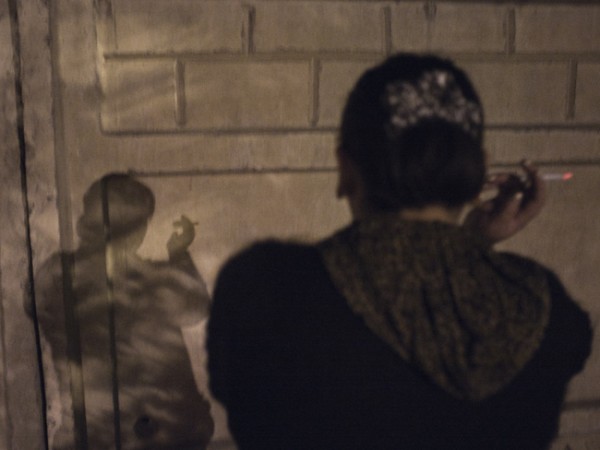
A 'mama'. Mamas are girls who organize the sex workers on the street while offering their protection in exchange for a percent. There are three different levels of percentages: one equal to zero which relates to independent sex workers, 50 percent in exchange for housing, protection and food, and 100 percent in exchange for all the previous plus a monthly amount of money given to the girls' families. 'There are 20 girls under my protection. Once every three days the police comes and takes one and ask for a bribe to release her; once a week they also rape one and then ask for money'. While independent prostitution is legal in Kyrgyzstan, every form of organized structure is not, but this is fixed by paying bribes to the police.

Outside view of Sauna

Entrance of a sauna
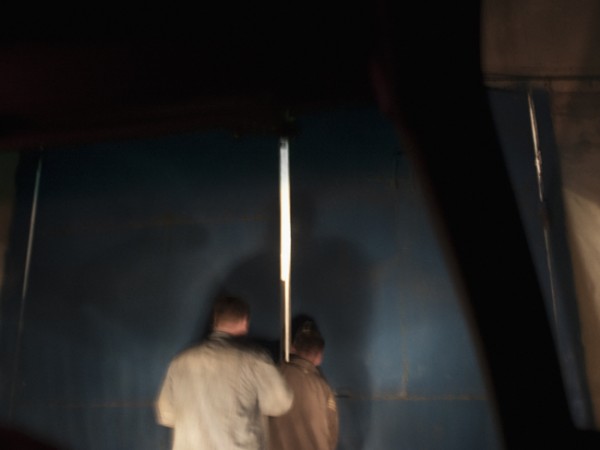
Clients enter a sauna in the city of Kant, near the Russian military base
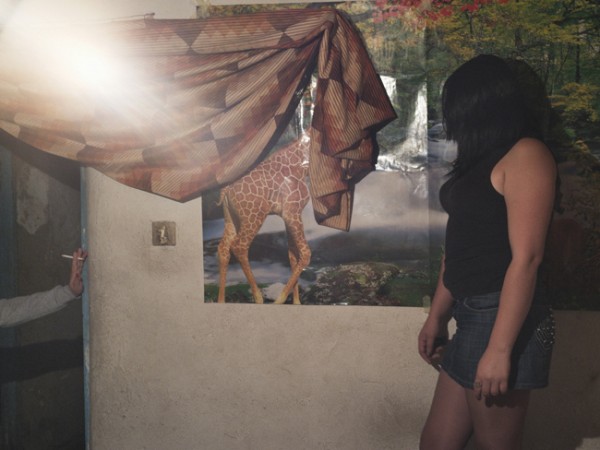
A girl in her room inside the sauna building

Sex worker sitting inside a Sauna in the city of Kant.
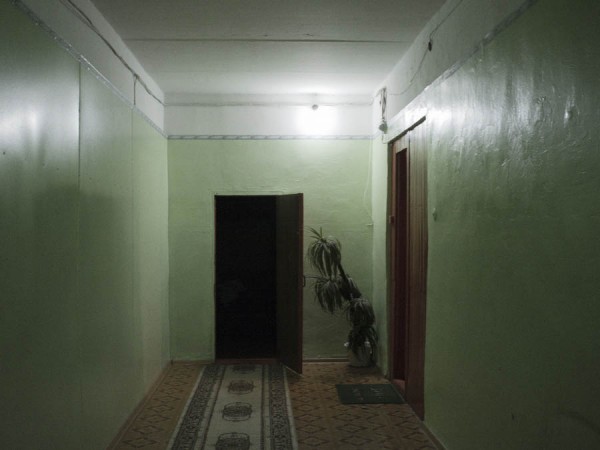
Hallway inside a sauna in the city of Kant. Sex market in Kyrgyzstan is extremely organized into levels. The lowest is the street level, followed by the 'cantora' (office), a mini van that carries the girls and delivers them to the clients who call, and the salon, where the elite girls work after being trained and prepared to look more beautiful.
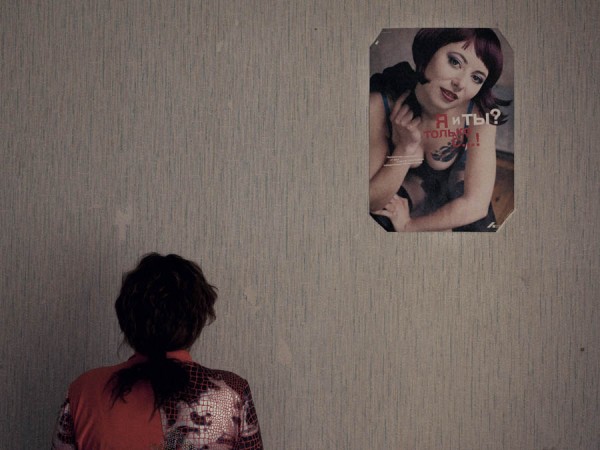
Sveta. She was taken to the Emirates with the promise of a job. On arrival her passport was taken away and she was enslaved as a sex worker for 3 years and a half, until a politician helped her to get back to Kyrgyzstan. She is now working at the Tais Plus NGO helping the girls on the streets.

Sasha, 29, male sex worker and middle school history teacher. In the capital city there are a few male sex workers but the highly traditional society makes their job dangerous. Sasha has about 6 trusted clients who call him for his services. 'I don't work per hour; I want intimacy with my clients, so I stay with them for a full night, for about 12000 Soms (200 euros)'.

A view of the Osh Bazar. NGO Tais Plus members state that the area is where the lowest level of prostitution can be found, with a very high number of clients and low hygiene level

A tunnel on the road that connects Bishkek and Osh. This is the main rout for drug trafficking that runs from Afghanistan to Russia, and through which 70% of the drug passes by.

Ex convict and drug user at the shelter center of the Astoria foundation in Bishkek. 'I have been in prison 4 times; when the police stopped me they would put heroin in my pockets to take me in'. According the members of various rehabilitation centers in Kyrgyzstan the dealers buy drugs from the police, who keep part of substances confiscated from the major trafficking trucks and sell it. This kind of heroin is called Red Heroin. The police gets heroin into prison as well, selling it to some prisoners who mix it with water and resell it to other convicts.

Drug addict and ex convict in a shelter center in Osh. 40 years old, 17 years in prison. He is the last one alive of his group of friends that started using drugs with him. 'I have two skulls tattooed on my chest because I killed two men; the knife is to tell the police that they can't kill me, as I am already dead'.

Former drug usaddicted in rehabilitation at the 'House of Half the Way', in the mountains north of Bishkek. The center is part of the Association of Harm Reduction NGO.

Denis, ex convict and drug user currently working as a social assistant at the 'Phoenix Hostel' rehabilitation center, part of the Association for Harm Reduction NGO. The center shelters HIV positive, alcoholics and drug users for a period of two months during which the patients work in the community and receive support.
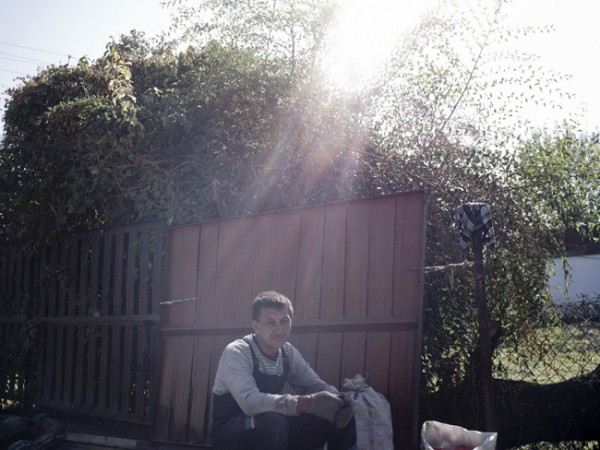
Man in the rehabilitation center takes a break from work

A woman awaits to be given her dose of Metadone, which helps her curing heroin addiction. Metadone is provided by specialized narcotic centers in Hospitals.

Olga takes a dose of Methadone in front of her daughter. Methadone is a substitute for heroin and is used to cure addiction, but sometimes patients mix it with other substances which cause problems to skin, hair and teeth-loss.

Posters on a wall of a narcology center in Bishkek. Here patients can get treated with methadone to treat heroin addiction.

Believers crowding the main mosque in Bishkek and praying even on the sidewalk and on the street outside the building. In the recent years the number of believers has been growing and many have come closer to tradition, seen as a moral alternative to the issues of the secular society. The government tries to control the Imam's teachings by certifications given through standardized tests approved by the central mufti; on the other hand in the south of the country independent groups have been seeking a greater influence of Islam on the state politics.

Inside of a mosque in the village of Kadj Sai, in the Issik Kol region. The country is witnessing a growth of the number of believers; in many rural areas there have been cases of Imams that preach a stronger influence of Islam in state policies, escaping the certification of the central mufti approved by the government.

Outside of the Rabat Abdullah Kahn mosque in Osh.

A couple in Osh. While elder women wear the traditional soviet veil on the head, younger generations use the Hijab according to the muslim tradition which is growing stronger within the society.

People exiting the Museum on the slopes of Solomon Throne on the hill in the city of Osh.

An employee sleeping on a bench during working hours at the National Museum in Bishkek. Museums have a great potential for the creation of a national identity, but this opportunity is not exploited by the Kyrgyz government, which doesn't take care of such institutions and of their employees.

People waiting to cross the border between Kyrgyzstan and Uzbekistan near the city of Osh. During summer 2010, tensions between the two ethnic groups erupted in riots that caused around 400 casualties and made thousands of Uzbeks seek refugee away from Kyrgyzstan.

Girl in front of Ala Too, the main square in Bishkek, capital of Kyrgyzstan. The National Historical Museum stands on the center of the square